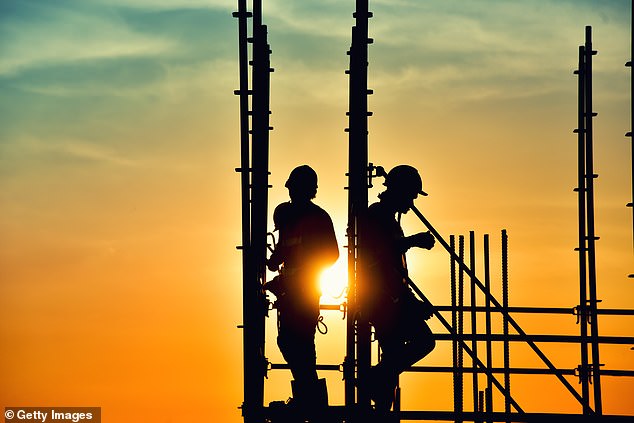How striking women can play a role in construction
- Women in Property aims to improve gender balance on construction sites
- According to the ONS, only around 15% of the construction workforce is female
<!–
<!–
<!– <!–
<!–
<!–
<!–
The construction industry is not just about muddy areas and hard hats.
This is what the boss of Women in Property, a group that wants to improve gender balance on construction sites, says.
According to the Office for National Statistics, only around 15 percent of the construction workforce is female, a number that has remained stubbornly low despite industry efforts.

Safety first: Kelly Cartwright
It drops even further as you go to the coalface, with the Home Builders Federation (HBF) estimating that just 4% of people on housing estates are women. Yet there are a number of figures from the construction world who are taking the lead in changes.
Of the three housebuilders in the FTSE 100, Taylor Wimpey has a female CEO in Jennie Daly and Barratt Developments has a female chairman in
Caroline Silver.
Anne Billson-Ross, head of recruitment at Taylor Wimpey, told the Mail: 'There is no doubt that diversity is an area that needs more effort in the housing sector, which has traditionally attracted fewer women and people from ethnic minorities.
'While progress is being made, the sector must fully reflect Britain's diversity and continue to attract the necessary skills to deliver the homes the country needs.'
It's a view echoed by Kelly Cartwright, the boss of her own construction site recruitment agency, Core Recruiter, who made headlines last year when she turned up at an awards ceremony in a dress made entirely of high-vis.
The floor-length dress was designed by a seamstress who was tasked with making Cartwright, 31, feel comfortable.
“I don't feel comfortable in a ball gown, so I thought I'd wear something I felt comfortable in,” she told the Mail. She says that at major industry events, she feels like an “imposter,” especially when the rooms are predominantly filled with men.
Behind the glamorous dresses lies a much bigger point. Calling it an 'untapped labor pool', Cartwright believes attracting more women into the sector could help address the sector's well-documented gaps.
According to estimates from the Construction Skills Network, the sector will need to recruit 45,000 workers per year by 2027 to meet demand. This means another 225,000 employees.
There is also the problem of an aging population. In 2011 it was estimated that one in five British-born construction workers were aged 55 or over, meaning that almost all of these people will have reached retirement age by last year.


High expectations: construction is still a man's world
Cartwright argues that encouraging children at school level could be the answer. “Construction doesn't seem to be on their radar,” she says.
“There would have been a generation that took up the profession because their fathers and grandfathers had done it. We just don't see this now. There is a dying generation of construction.
“We're not getting the younger generation to meet these needs.”
And if that doesn't change, Britain will lack the volume and caliber of skilled builders, a situation that feels even more urgent post-Brexit and the pandemic.
Chithra Marsh, chair of Women in Property, believes early education would drive change as the sector is far from inclusive.
“Much of this starts at school, where most children and young people have no idea of the breadth and depth of careers available to them in the industry – construction isn't just about muddy grounds and hard hats,” she said.
Steve Turner, director of the HBF, added: 'Housing is facing an acute and growing skills shortage, and if we don't address this we will not be able to solve the housing crisis. We need the Government to work with industry, colleges and training providers to ensure students gain the skills they and businesses need.”

